Introduction – Top 10 Yogasanas for Kids to Improve Flexibility and Strength
Yoga is a wonderful practice that offers numerous benefits for people of all ages, including children. Engaging children in yoga not only promotes physical fitness but also helps them develop concentration, flexibility, and strength. In this blog, we will explore the top 10 yogasanas (yoga poses) specifically tailored for kids to improve their flexibility and strength. These poses are safe, fun, and suitable for children of varying ages and abilities. By incorporating these yogasanas into their routine, children can embark on a journey of physical and mental well-being.
Table of Contents
Why Is Yoga Important for Kids?
Yoga is important for kids because it offers a wide range of physical, mental, and emotional benefits. Physically, yoga helps improve flexibility, strength, and coordination, supporting healthy growth and development.

Mentally, it helps children develop concentration, focus, and mindfulness, enhancing their ability to learn and handle stress.
Emotionally, yoga promotes self-awareness, self-confidence, and a sense of calm. It also teaches kids valuable skills such as body awareness, breath control, and the importance of taking care of their well-being. Overall, yoga provides a holistic approach to nurturing children’s overall health and well-being.
What Kind of Yoga Is Good for Kids?
For kids, a gentle and playful form of yoga is often recommended. Hatha yoga, which focuses on physical postures (asanas) and breath control (pranayama), is a good choice for children.
Hatha yoga offers a balanced practice that combines stretching, strengthening, and relaxation. It helps children develop body awareness, balance, and coordination, while also promoting mindfulness and relaxation.
Within Hatha yoga, variations and modifications can be made to suit different age groups and abilities, making it accessible and enjoyable for kids.
What Age Can Kids Start Yoga?
Children can start practicing yoga as early as toddlerhood, with parent-child or family yoga sessions. However, structured yoga classes specifically designed for kids usually begin around the ages of 4 to 6.
At this stage, children have better motor skills and attention span, making it easier for them to participate in a structured class setting. It’s important to choose age-appropriate poses and activities and ensure that the class environment is safe, supportive, and engaging for young children.
Can A 7-Year-Old Do Yoga?
Absolutely! A 7-year-old can certainly do yoga. At this age, children are more physically capable and can follow instructions with greater understanding. They can participate in yoga classes or practice at home with proper guidance.
It’s important to choose age-appropriate poses, keep the sessions engaging and enjoyable, and encourage children to listen to their bodies and take breaks as needed. Yoga can be a wonderful and beneficial activity for 7-year-olds to support their physical, mental, and emotional development.
What Is Hatha Yoga for Kids?
Hatha yoga for kids is a modified and age-appropriate version of traditional Hatha yoga. It incorporates yoga poses, breathing exercises, and relaxation techniques suitable for children.
The focus is on making the practice fun, engaging, and accessible to young practitioners. Hatha yoga for kids may include playful elements, storytelling, music, and games to keep children interested and motivated.
The aim is to introduce children to the benefits of yoga in a way that is enjoyable and appropriate for their age and developmental stage.
How Long Should Kids Hold Yoga Poses?
The duration of holding yoga poses for kids can vary depending on their age, ability, and the specific pose being practiced. For younger children, starting with shorter durations of 10-15 seconds and gradually increasing the time as they build strength and flexibility is recommended.
Older children can hold poses for 20-30 seconds or longer. It’s important to encourage children to find a balance between effort and comfort, avoiding strain or discomfort. The focus should be on proper alignment, mindful breathing, and enjoying the experience rather than pushing for longer durations.
What Time of Day Is Best for Kids to Do Yoga?
The best time of day for kids to do yoga can vary based on their individual preferences and schedules. Generally, it’s beneficial to choose a time when children are well-rested and energized.
Some children may find it helpful to practice yoga in the morning to start the day with a sense of calm and focus. Others may prefer practicing in the afternoon as a way to recharge and release any built-up tension.
Ultimately, the most important factor is consistency, so finding a time that works well for the child and allows for regular practice is key.
Top 10 Yogasanas for Kids to Improve Flexibility and Strength
Downward Facing Dog (Adho Mukha Svanasana)
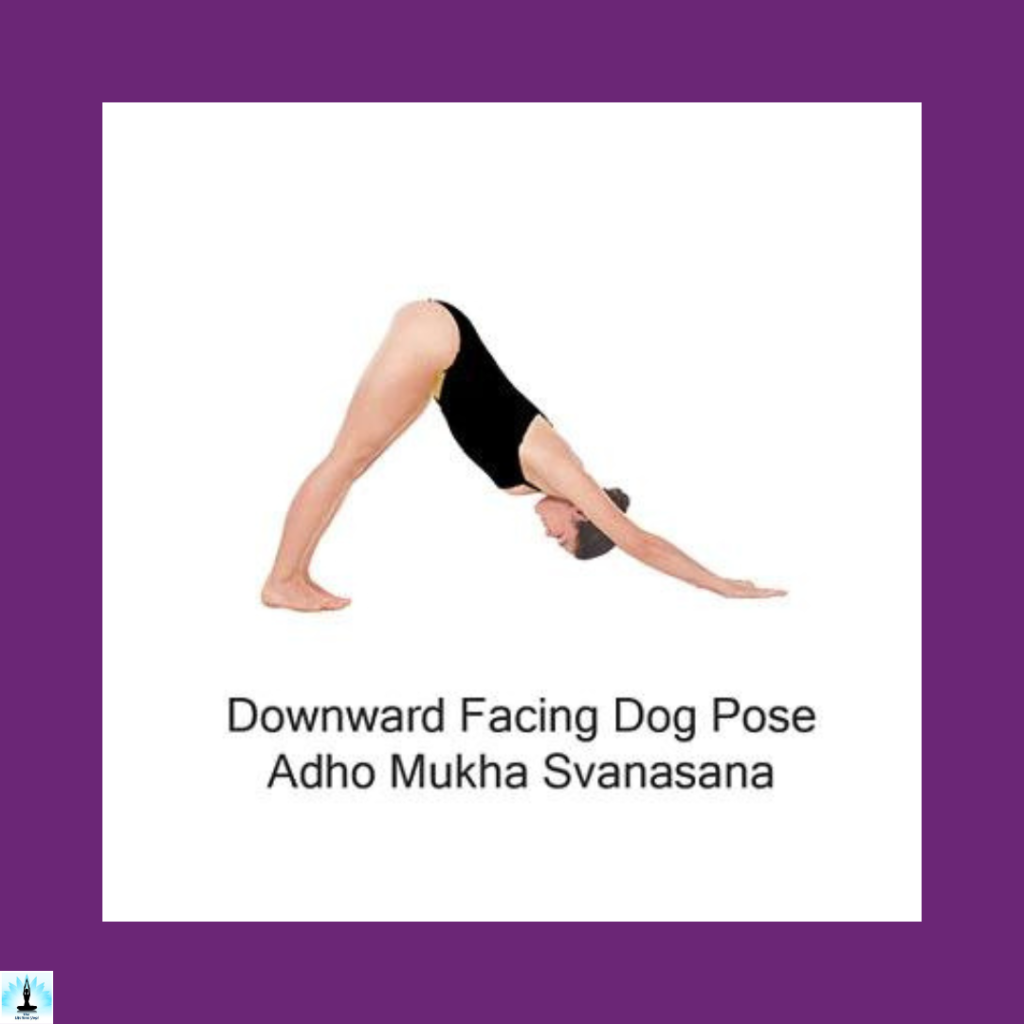
Downward Facing Dog is a popular pose that strengthens the arms, shoulders, and core muscles. To practice this pose, kids start on their hands and knees, spreading their fingers wide. They then lift their hips up, forming an inverted “V” shape with their body.
This pose improves posture, stretches the hamstrings, calves, and back muscles, and enhances overall body strength. Kids can even pretend to be playful dogs, wagging their tails and enjoying the experience.
Tree Pose (Vrikshasana)

Tree Pose is a balancing pose that helps children develop focus, concentration, and balance. Kids stand tall with their feet together and then lift one foot to place it on the inner thigh or calf of the opposite leg.
They can extend their arms overhead, mimicking the branches of a tree. This pose strengthens the legs, improves stability, and enhances body awareness. Encouraging imagination by visualizing themselves as strong and sturdy trees can make this pose even more enjoyable for kids.
Cobra Pose (Bhujangasana)
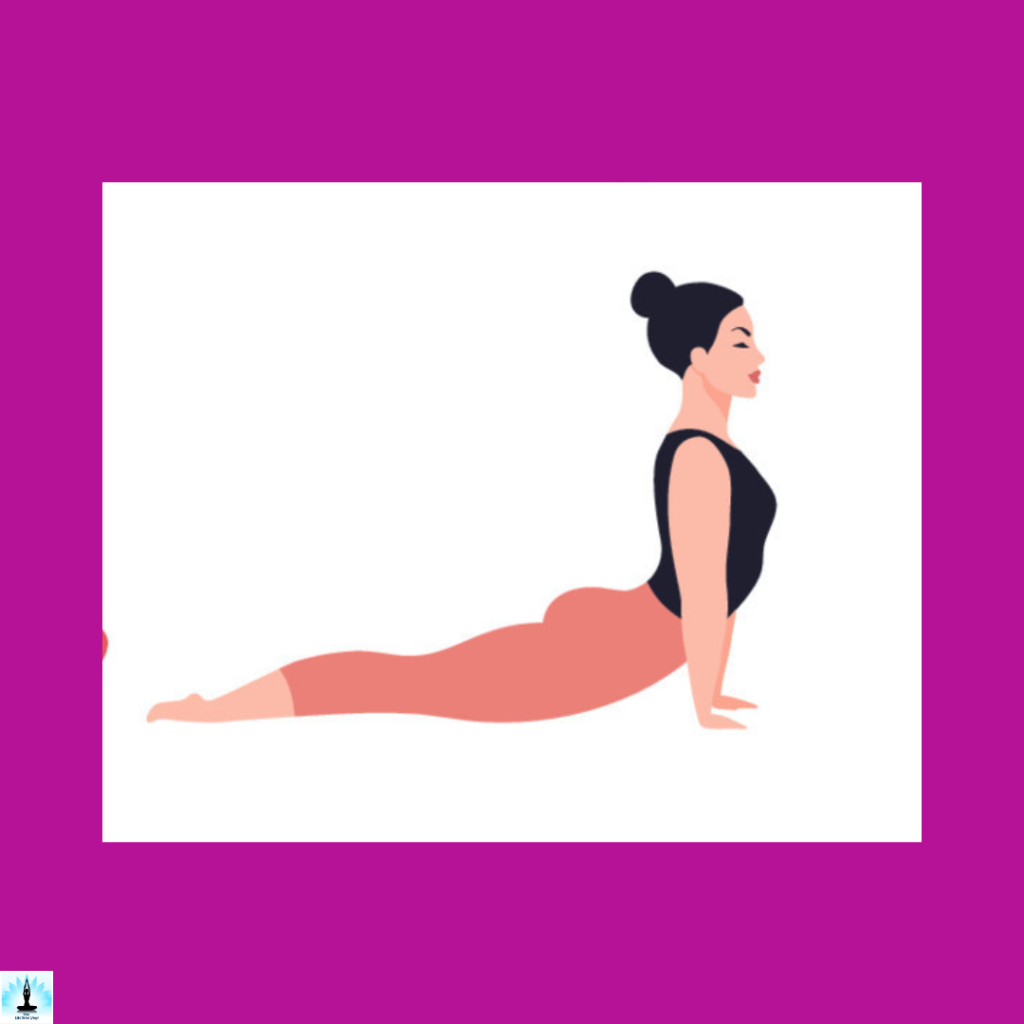
Cobra Pose is a gentle backbend that strengthens the back muscles and stretches the chest and abdomen. Children begin by lying on their stomachs, placing their hands beside their shoulders. They then lift their upper body off the ground, keeping their elbows slightly bent. This pose not only enhances spinal flexibility but also improves posture and digestion. Kids can imagine themselves as graceful cobras exploring the jungle while practicing this pose.
Butterfly Pose (Baddha Konasana)
Butterfly Pose is a seated pose that opens the hips and stretches the inner thighs. Kids sit on the floor, bend their knees, and bring the soles of their feet together, allowing their knees to fall outward.
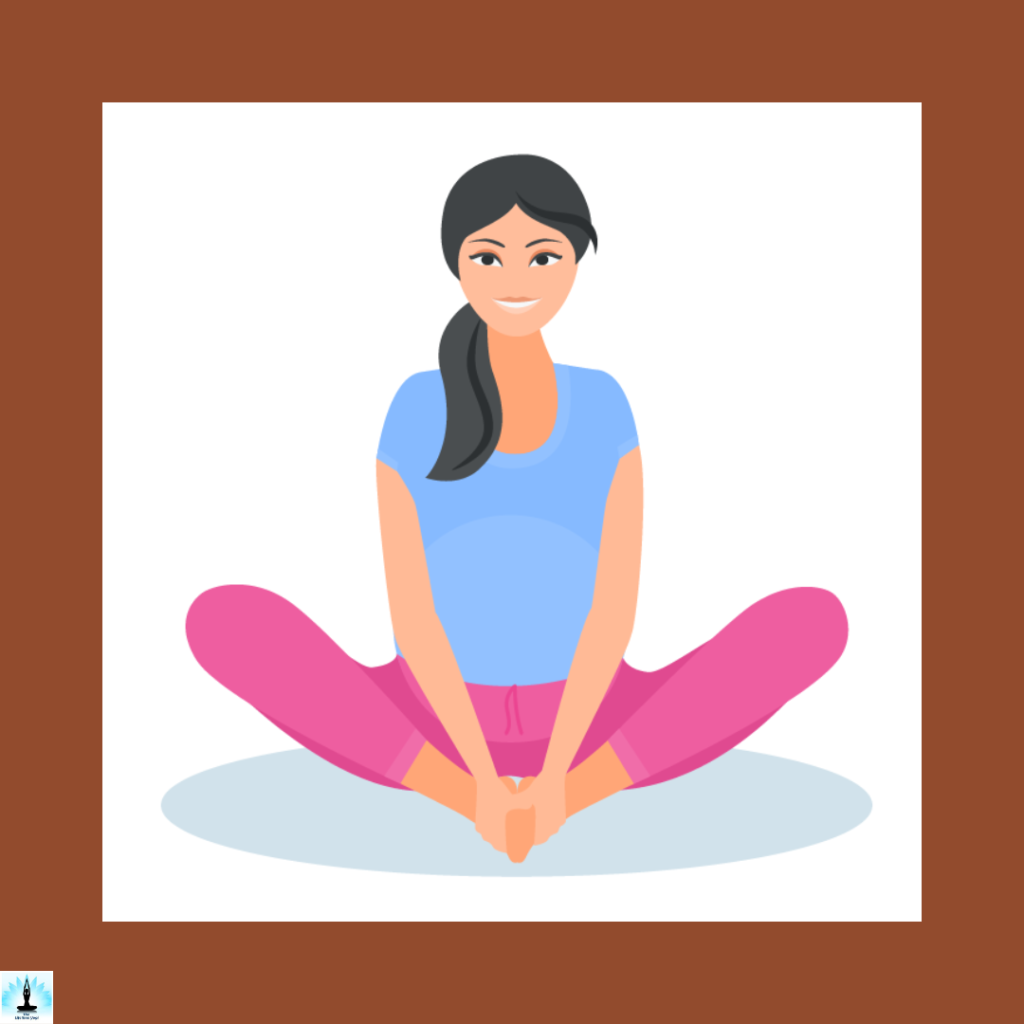
They can hold onto their feet and gently flap their legs up and down, imitating butterfly wings. This pose improves flexibility in the hips and groin area and stimulates blood circulation. Encouraging children to flutter their wings gently can make this pose a delightful experience.
Warrior Pose (Virabhadrasana)
Warrior Pose is a strong standing pose that builds strength, stability, and focus. Kids start by standing with their feet wide apart, lunge to the side, and bend their front knees. They extend their arms, one forward and one backward, resembling a warrior ready for battle.

This pose strengthens the legs, stretches the hip flexors, and improves balance. Kids can engage their imagination by pretending to be brave warriors defending their castle or embarking on an exciting adventure.
Bridge Pose (Setu Bandhasana)
Bridge Pose is a backbend that strengthens the back, glutes, and hamstrings. Kids lie on their backs, bend their knees, and place their feet firmly on the ground. With their arms alongside their body, they lift their hips up, creating a bridge shape.

This pose improves spinal flexibility, stretches the chest and shoulders, and energizes the body. Children can visualize themselves as sturdy bridges connecting two magical lands while practicing this pose.
Cat-Cow Stretch
The Cat-Cow Stretch is a flowing sequence of movements that brings flexibility to the spine and releases tension. Kids start on their hands and knees, arch their back while looking up (cow pose), and then round their back while looking down (cat pose).
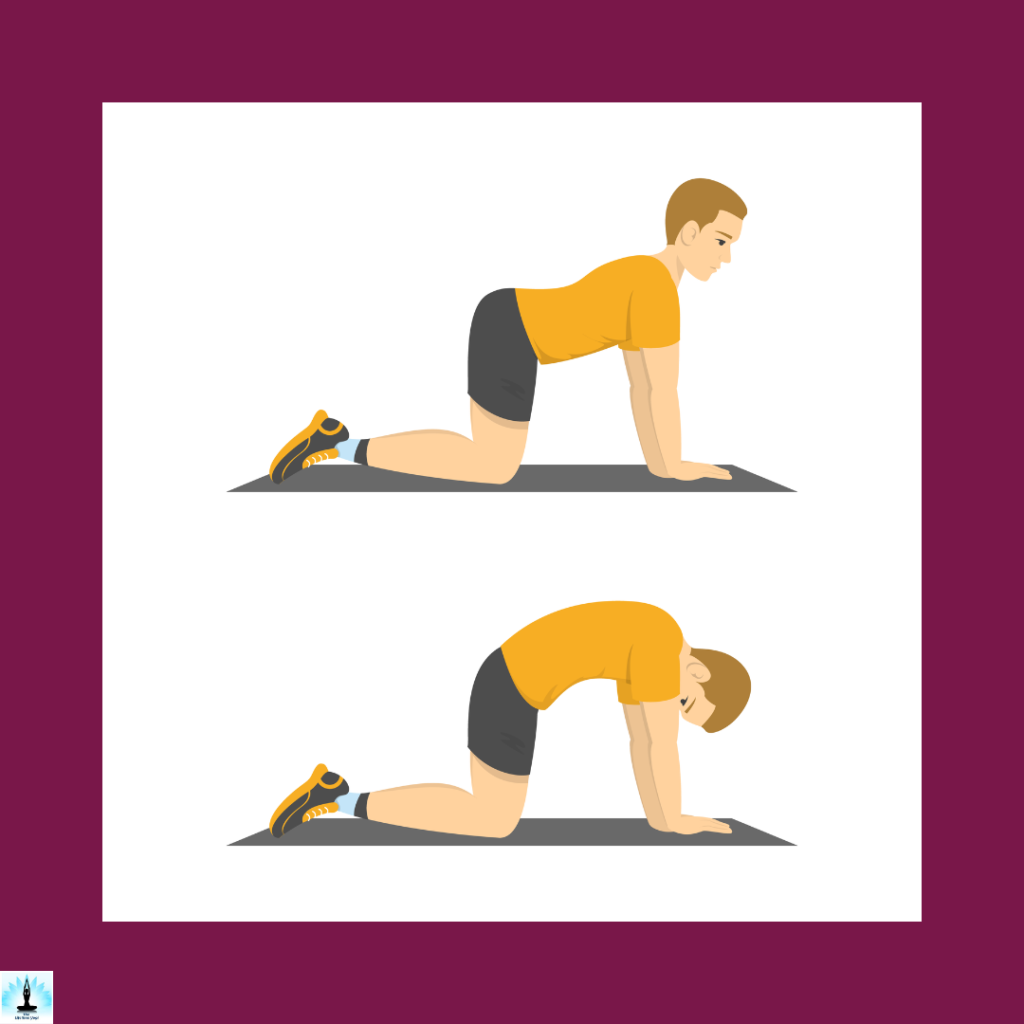
This pose strengthens the core, improves posture, and massages the spine. Children can add playful sounds, imagining themselves as curious cats and cows exploring their surroundings.
Boat Pose (Navasana)
Boat Pose is a challenging seated pose that engages the core muscles and improves balance. Kids sit on the ground, bend their knees, and lift their feet off the floor, balancing on their sitting bones. They extend their arms forward, parallel to the ground.
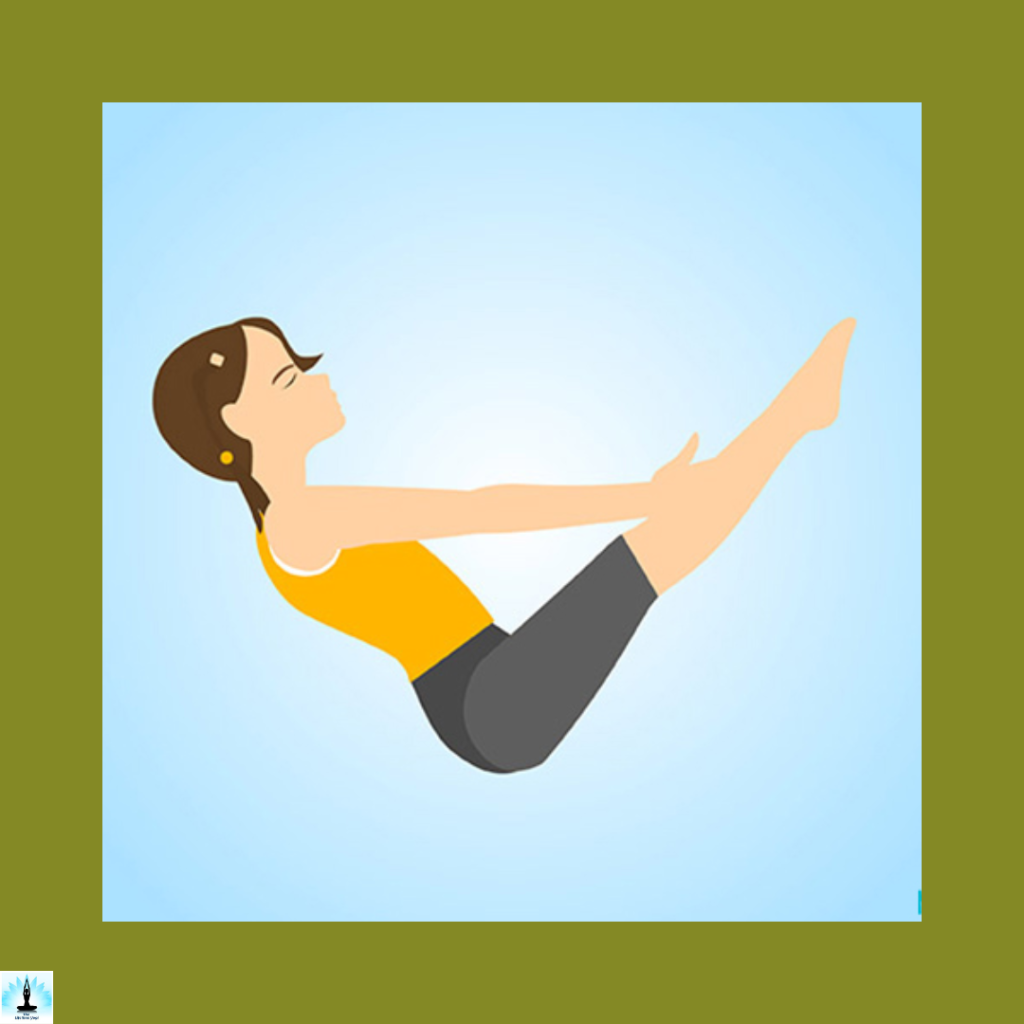
This pose strengthens the abdominal muscles, improves digestion, and develops concentration. Children can imagine themselves sailing on a magical boat across the sea while practicing this pose.
Happy Baby Pose (Ananda Balasana)
Happy Baby Pose is a playful pose that releases tension in the lower back and hips. Kids lie on their backs, bend their knees, and hold onto the outsides of their feet, gently pulling their knees towards their armpits.

This pose stretches the hips, inner thighs, and hamstrings. Children can rock gently from side to side, embracing their inner joy and carefree spirit.
Corpse Pose (Savasana)
Corpse Pose is a relaxation pose that allows children to rest and rejuvenate. Kids lie on their backs with their arms and legs comfortably spread apart. They close their eyes and focus on their breath, letting go of any tension or stress.
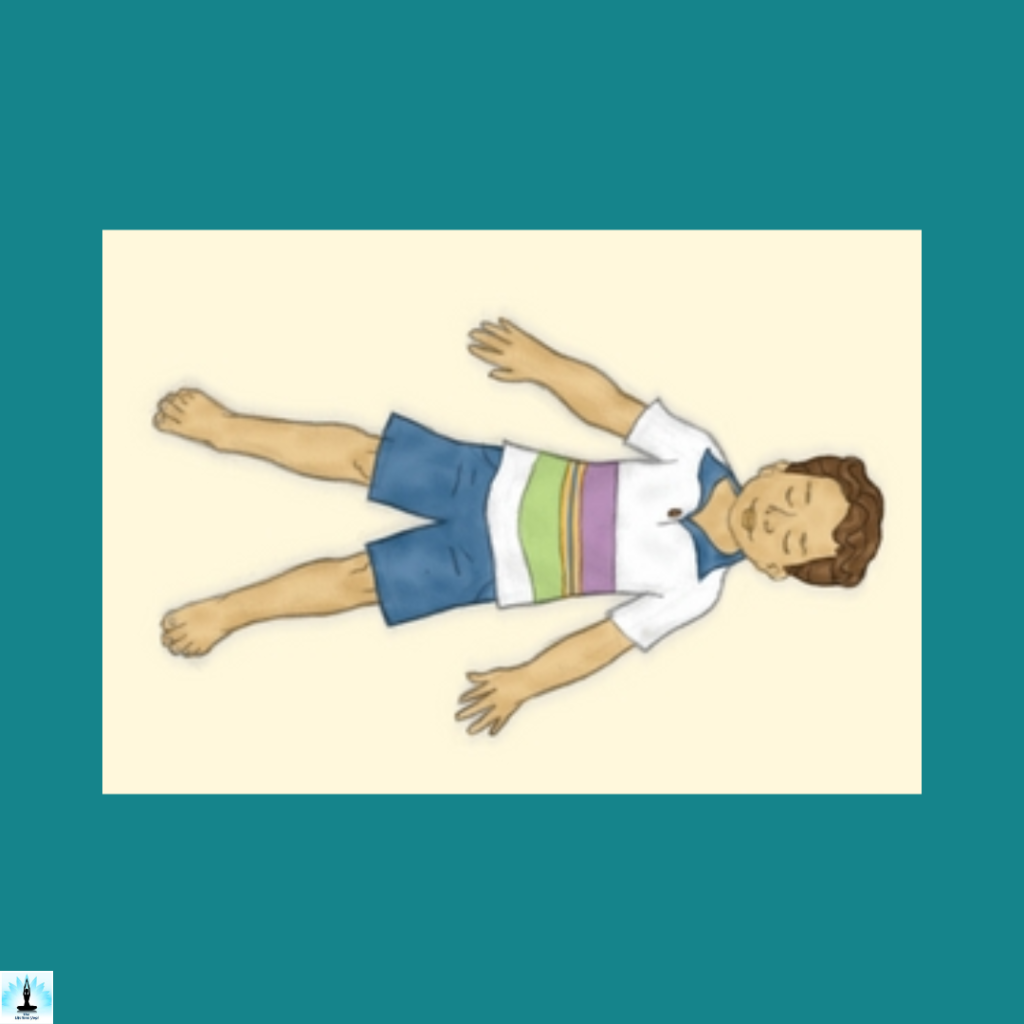
This pose promotes deep relaxation, reduces anxiety, and improves sleep quality. Children can imagine themselves as peaceful stars shining brightly in the night sky while practicing this pose.
FAQs on “Yogasanas for Kids to Improve Flexibility and Strength”
Why is it important for kids to practice yogasanas for flexibility and strength?
Practicing yogasanas helps kids improve their flexibility and strength, which are essential for overall physical development. Flexibility allows for greater range of motion in joints and muscles, reducing the risk of injuries.
Strength, on the other hand, helps build strong muscles and bones, supports good posture, and enhances body control and coordination. By incorporating yogasanas into their routine, kids can develop a solid foundation of physical fitness that will benefit them as they grow.
Are Yogasanas Safe for Kids?
Yes, yogasanas are generally safe for kids when practiced under proper guidance and supervision. It is important to choose age-appropriate poses and ensure that children understand and follow proper alignment and breathing techniques.
It’s recommended to start with simple poses and gradually progress as their flexibility and strength improve. If your child has any specific health concerns or limitations, it is advisable to consult with a qualified yoga instructor or healthcare professional before starting a yoga practice.
Can Yogasanas Help Improve Children’s Concentration and Focus?
Yes, practicing yogasanas can have a positive impact on children’s concentration and focus. Through focused breathing and mindful movement, yogasanas encourage children to be present in the moment and develop a sense of body awareness.
The practice of balancing poses, such as Tree Pose, requires concentration and can enhance attention span. Additionally, the relaxation and mindfulness practices in yoga, like Savasana, help calm the mind, reduce stress, and improve overall mental clarity and focus.
How Can I Make Yogasanas Fun and Engaging for Kids?
Making yogasanas fun and engaging is key to keeping children interested and motivated. Here are a few ideas:
- Incorporate storytelling: Create imaginative stories related to the poses, where children can pretend to be animals, superheroes, or characters from their favorite books. This adds an element of playfulness to the practice.
- Use props: Introduce colorful yoga mats, blocks, or soft toys that can be incorporated into the poses. Props can make the practice more interactive and enjoyable for kids.
- Play yoga games: Create yoga-inspired games that involve movement, coordination, and teamwork. For example, a yoga obstacle course where children have to perform different poses at different stations.
- Practice with music: Play soft and calming music during the relaxation poses, or choose upbeat and rhythmic tunes for energizing poses. Music can make the experience more enjoyable and help set the mood for different poses.
How Frequently Should Kids Practice Yogasanas to See Results?
Consistency is key when it comes to practicing yogasanas. Starting with a few sessions per week is a good approach. As children become comfortable with the practice, gradually increase the frequency to daily or as often as their schedule permits.
Remember, even short practice sessions of 10-15 minutes can be beneficial. Regular practice over time will help children improve their flexibility, strength, and overall well-being. However, it’s important to ensure that children have adequate rest and recovery between sessions to prevent overexertion.
Can Children Practice Yogasanas on Their Own, Or Should They Have Supervision?
While older children who have learned the basics of yogasanas and proper alignment may be able to practice on their own, it is generally recommended that younger children have adult supervision.
An adult can guide them through the poses, ensure their safety, and provide assistance when needed. Additionally, practicing together as a family can be a wonderful bonding experience and create a supportive environment for children to explore yoga.
Conclusion
Introducing children to yogasanas from an early age sets the foundation for a healthy and balanced lifestyle. The top 10 yogasanas mentioned above provide a range of physical and mental benefits, including improved flexibility, strength, balance, concentration, and relaxation.
It is important to make the yoga experience enjoyable for children by incorporating storytelling, imaginative play, and a sense of adventure. Encourage them to embrace their creativity, listen to their bodies, and have fun while practicing these poses. With regular practice, children can develop a love for yoga and enjoy a lifelong journey of well-being.
References
- Jain, Andrea (2016). “Modern Yoga”. Oxford Research Encyclopedia of Religion. Oxford University Press. doi:10.1093/acrefore/9780199340378.013.163. ISBN 9780199340378.
- De Michelis, Elizabeth (2007-10-16). “A Preliminary Survey of Modern Yoga Studies”. Asian Medicine. 3 (1): 2–3. doi:10.1163/157342107×207182. ISSN 1573-420X. S2CID 72900651.
- De Michelis 2004, pp. 187–189.
- De Michelis, Elizabeth (2007). “A Preliminary Survey of Modern Yoga Studies” (PDF). Asian Medicine, Tradition and Modernity. 3 (1): 1–19. doi:10.1163/157342107X207182.
- Singleton 2010, pp. 18–19.
- Mohan, A. G.; Mohan, Ganesh (29 November 2009). “Memories of a Master”. Yoga Journal. Archived from the original on 6 March 2010.
- Singleton, Mark (4 February 2011). “The Ancient & Modern Roots of Yoga”. Yoga Journal.
